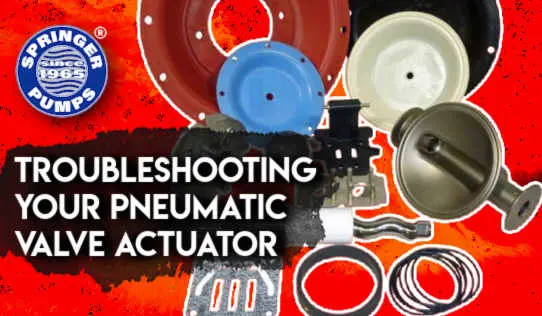
Troubleshooting a Pneumatic Valve Actuator for Fluid Pump Systems
Time to Read: 2m 0s

Pneumatic valves rely on actuator components for optimal performance. The function of a pneumatic valve actuator is to move the valve open or closed to direct fluid within a pump system. Your application performance may suffer when your valve actuator cannot perform properly. Here are some tips from Springer Parts for troubleshooting a malfunctioning pneumatic valve actuator for fluid pump systems.
Troubleshoot Your Pneumatic Actuator Fluid Pump Application
When troubleshooting a pneumatic valve actuator component, the first step is to check your pressure and voltage levels, then confirm that your valve is not binding. It is also essential to ask: is this the original actuator, and if it is a replacement, is it the correct size? Before moving on, assess the valve to see if it is producing too much thrust for the actuator to respond.It may be helpful to ask yourself these questions:
- Is the pneumatic valve moving?
- Is the pneumatic valve moving slower than it should?
- Is the pneumatic valve responding to devices without a connection?
Possible Solutions for Pneumatic Actuator Challenges
With each inquiry, there are a variety of challenges and solutions:If the pneumatic valve is immovable, you should be able to achieve a solution by replacing solenoid valves or inserting new coils, repairing the ring and cylinder, cleaning or replacing damaged components, or converting the handle to a pneumatic position.
If the pneumatic valve moves slower than performance intends, raising the gas supply pressure, increasing the actuator output, reassembling, or replacing the filter cartridge should solve the malfunction.
If the pneumatic valve responds to devices without a proper connection, address operation practices for power conduits, set the cam appropriately, or replace the microswitch to restore your valve application for correct electrical responses.


